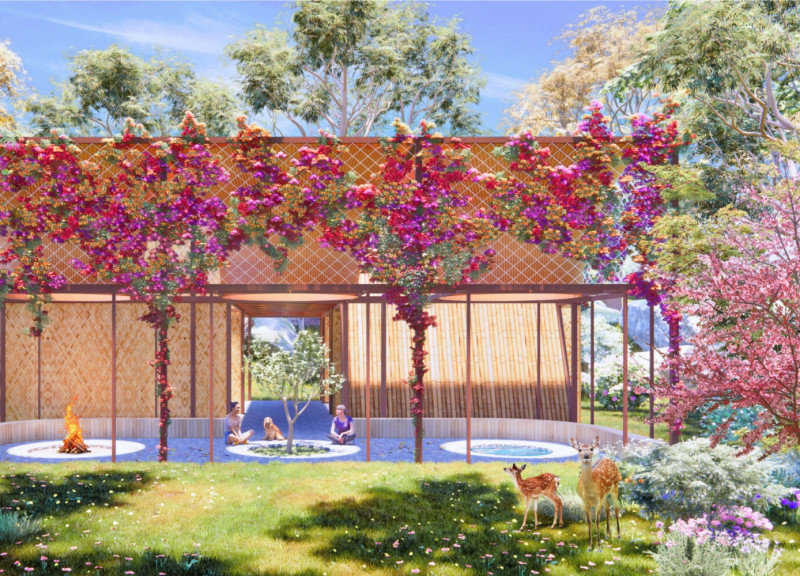5 key facts about this project
At first glance, the architecture is distinguished by its integration with the landscape. The design embraces its surroundings, utilizing the natural topography to enhance the user experience. Large windows provide sweeping views of the landscape, allowing natural light to flood the interiors while maintaining a continuous visual connection with the outdoors. This approach not only reduces the reliance on artificial lighting but also reinforces the occupants' connection to nature.
The materiality of the project is equally striking and plays a crucial role in its overall aesthetic and functionality. The primary materials used include sustainably sourced timber, locally produced stone, and low-emission glass. The warm tones of the wood contrast beautifully with the cool, rugged texture of the stone, creating a tactile experience that invites exploration. The choice of low-emission glass reflects a commitment to energy efficiency. Its performance characteristics help regulate indoor temperatures, thus contributing to the sustainability goals of the design.
The layout of the project is characterized by an open plan, which allows for flexible use of spaces. The arrangement is intentional, fostering social interaction while providing designated areas for privacy. Key spaces within the structure include a communal gathering area designed to facilitate events and interactions. This space is accentuated by high ceilings and an overhead skylight that brings the dynamic play of light throughout the day.
Moreover, the design incorporates eco-friendly elements such as green roofs and rainwater harvesting systems, showcasing a dedication to both environmental stewardship and innovative architectural ideas. The green roofs not only contribute to thermal insulation but also create additional habitats for local wildlife. This biophilic design element reinforces the connection between the built environment and the nature surrounding it.
Unique design approaches, such as the incorporation of passive solar heating and cross-ventilation, ensure that the building is responsive to its climate. This sensitivity to environmental conditions illustrates a forward-thinking mindset, promoting sustainability without sacrificing comfort or aesthetic value.
In terms of circulation, the project utilizes a clear and intuitive pathway that encourages movement while seamlessly connecting different spaces. The interplay of indoor and outdoor spaces is evident, with patios and balconies extending the living areas, effectively dissolving the boundaries between inside and out. This careful consideration extends to the landscape design, where native plant species are employed to enhance the ecological performance and maintain local biodiversity.
Overall, this architectural project represents a balanced blend of modern design principles and traditional values, showcasing how architecture can harmonize with its environment while serving functional needs. The thoughtful consideration of materiality, spatial organization, and ecological integration sets this project apart as a noteworthy example in contemporary architecture.
For those interested in delving deeper into the architectural plans, sections, and unique design elements, exploring the full project presentation will unveil further insights into the underlying architectural ideas that shape this remarkable project. Engage with the various aspects of the design to appreciate how each component works in unison to create a cohesive architectural narrative.


 Pablo Landeo Mochcco,
Pablo Landeo Mochcco, 




















